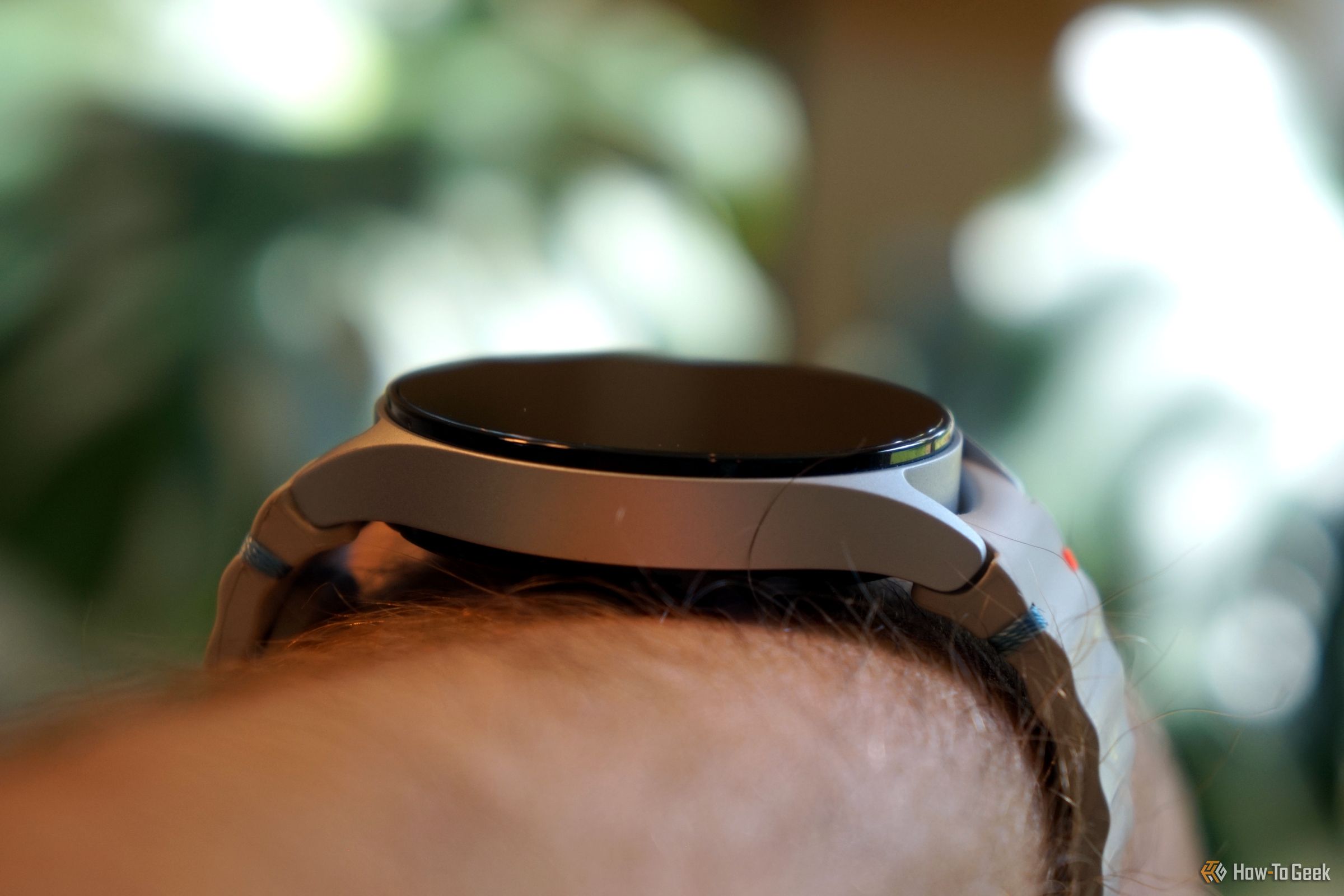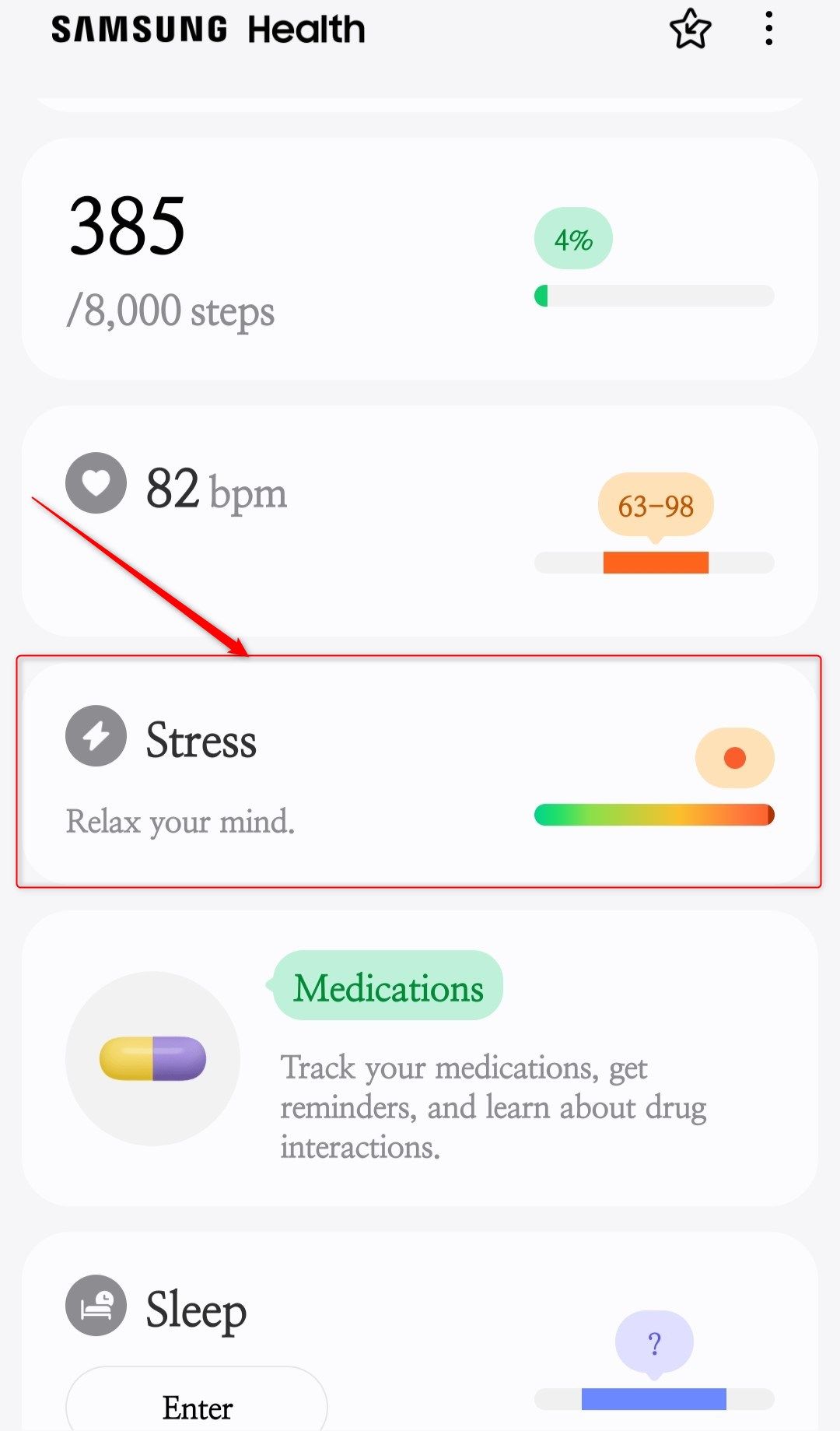Key Takeaways
- Your Galaxy Watch can measure your stress levels using your heart rate and heart rate variability.
- You can measure stress manually with your Galaxy Watch or have it continuously measured automatically.
- These readings are approximations, and various environmental factors can affect their accuracy.
- The readings from the Galaxy Watch are good ballpark estimations, but don’t rely on them over medical advice.
If you own a Galaxy Watch, you probably know that it can supposedly measure your stress levels. But how exactly can a watch on your wrist do that, and can it really do it accurately? The Galaxy Watch can definitely do it, but there are some important caveats to keep in mind about its readings.
How Exactly the Galaxy Watch Measures Your Stress
Technology these days is pretty amazing. Not that long ago, the idea of your watch being able to measure stress levels would have seemed far-fetched. But this is something your Galaxy Watch can do thanks to its possession of a heart rate sensor. Much like a nurse taking your pulse, your Galaxy Watch can measure two important metrics even from your wrist.
Those metrics are your heart rate and your heart rate variability, or HRV. Your heart rate is how fast your heart is beating, while HRV is the difference in intervals between your heartbeats. Don’t worry too much about the medical jargon: all you need to know is that these two metrics are used by your Galaxy Watch to assess your stress levels.
Your Galaxy Watch will use just these two metrics to provide stress level readings, but can you trust them? There are a few factors to consider.
How Accurate are These Stress Readings?
First and foremost, you must realize that even the best smartwatch can only give you approximations of your stress levels. Furthermore, there are many things that influence how accurate those approximations will be. Firstly, your Galaxy Watch will need to gather data on your typical bodily metrics.
After all, without a baseline to judge your heart rate data against, your Galaxy Watch won’t know what’s normal for you and what isn’t. So, when you first start wearing your Galaxy Watch and getting stress readings, they might not seem very accurate at all. Give them some time, and they’ll start to more accurately represent how you’re feeling.
That said, your watch might not start reading your stress levels at all without your input. You may have to take measurements manually, but you can also set up your watch to take readings automatically. Both are fairly easy to set up.
Using Manual or Automatic Stress Readings
To initiate a manual stress reading on your Galaxy Watch, you’ll need to follow a few simple steps. First, open the Samsung Health app on your Galaxy Watch (or your connected Samsung phone). Then, scroll down until you see the Stress menu and tap on it.
At the bottom of this screen, you’ll see a button labeled “Measure.” Tap this to initiate a measurement from your Galaxy Watch.
Stay still during the measurement. When it’s over, you’ll get a reading on your Galaxy Watch. Tap “Show on Phone” if you want a more detailed report on your primary Samsung device.
With manual readings, you’ll only ever get a report on your stress levels when you want it. The good news is that this will help extend the battery life of your Galaxy Watch since it won’t be doing stress readings on its own. The bad news is that you won’t get very consistent or actionable data on your stress levels like this.
If you want your Galaxy Watch to automatically take periodic stress readings, you’ll need to set that up. Don’t worry, it’s very easy to do. Open the Samsung Health app on your Galaxy Watch (or your connected Samsung phone). Scroll down until you see “Stress” and tap on it.
There should be three small dots on the upper right side of the screen. Tap on that, then select “Advanced Measurement.”
Set your watch to “Measure Continuously.”
With this setting turned on, your Galaxy Watch will measure your stress levels at all times. As mentioned previously, this will be a tad detrimental to your battery life, since the watch will be carrying out this function continuously. However, continuous measurements will also give you a much better understanding of your real stress levels, since you’ll be able to see how it fluctuates all day, every day.
Regardless of whether you use manual or automatic measurements, if you want those measurements to be accurate, there are several factors you should be aware of that could impact accuracy.
Factors That Could Affect The Accuracy of Your Galaxy Watch Stress Measurements
As mentioned earlier, the stress readings provided by your Galaxy Watch are approximations. Stress is determined by a lot more than just your heart rate and HRV, so these readings are never going to be exact. But there’s still a difference between an accurate and an inaccurate approximation. There are some factors that could influence the accuracy of your readings.
Firstly, how snugly does your Galaxy Watch rest against your wrist? If the heart rate sensor doesn’t have good contact with your skin, stress level readings will be affected, so having the right band size is important. How clean the sensor is might have an impact too.
You’ll also need to take physical activity into account. Lots of things get your heart rate up besides stress, so you might get high-stress readings just because you were exercising. Readings taken during physical activity will be less accurate.
Finally, there’s your body temperature. If you feel significantly colder or warmer than your usual body temperature, that could affect stress readings. If the surrounding temperature is significantly different from room temperature, that could have an effect too. How well you can control these factors depends on whether you are doing manual or automatic stress readings.
Obviously, if you’re doing a manual reading, you can ensure that you are in an optimal environment before taking a reading: make sure the temperature is right, that you’re still and sitting down, and that you’ve calmed down after physical activity before taking a reading.
If you’re doing continuous measurements, you won’t be able to control the impact these factors have on your stress readings. Instead, you’ll just need to be aware of them when looking through your reports. If your Galaxy Watch says your stress levels were really high at 9 AM, but that’s when you go for your daily morning run, you can probably write that off as a result of exercise, not high stress.
The Galaxy Watch is no Replacement for Medical Assessment
Ultimately, your Galaxy Watch can give you a fairly good approximation of your stress levels. But it’s not a replacement for professional medical advice. If you feel stressed, but your Galaxy Watch claims you aren’t, don’t believe it over how you feel or what a doctor has to say. A heart rate sensor is a useful aide, but not a substitute for an expert’s judgment!
The Galaxy Watch is undoubtedly an amazing tool with a plethora of useful features. Stress isn’t even the only aspect of your health that it can provide approximate measurements for. As long as you keep in mind that the approximations aren’t the same as a medical diagnosis, you can use your Galaxy Watch to monitor your overall health.









